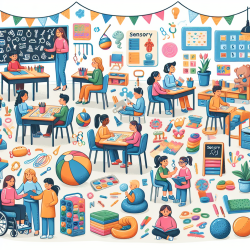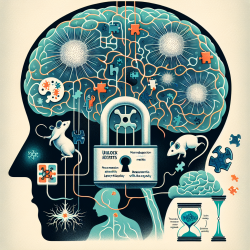Sensory integration is a vital yet often misunderstood aspect of child development, particularly in educational settings. As educators and parents strive to create inclusive learning environments, understanding sensory integration and sensory processing disorders becomes paramount. This blog delves into the essential concepts presented in "Answers to Questions Teachers Ask about Sensory Integration," offering practical tools and insights from experts like Jane Koomar, PhD, OTR/L, FAOTA, Carol Kranowitz, MA, and Stacey Szklut, MS, OTR/L.
What is Sensory Integration?
Sensory integration refers to the way the nervous system receives messages from the senses and turns them into appropriate motor and behavioral responses. When this process goes smoothly, children can appropriately respond to the sensations they experience. However, when there are challenges in processing sensory information, it can affect a child's ability to perform everyday tasks and participate in typical childhood activities.
The Role of Occupational Therapy
Occupational therapy plays a crucial role in helping children with sensory integration issues. Therapists work to improve the way children process and respond to sensory input. The book provides forms, checklists, and tools that are invaluable for educators working with occupational therapists to support students with sensory challenges.
Key Tools for Educators
- Sensory Input Organization: Learn how to effectively organize sensory input and activities within the classroom setting.
- Classroom Accommodation Checklist: A practical tool for adjusting the learning environment to better suit students with sensory processing disorders.
- Developmental Checklists: These include assessments for infants through school-age children and even adults/adolescents, helping educators identify specific sensory issues.
Characteristics of Sensory Dysfunctions
The guide provides detailed characteristics of various dysfunctions such as tactile, vestibular, proprioceptive, visual, and auditory dysfunctions. Recognizing these characteristics allows teachers to tailor their approach to meet each child's unique needs.
The Importance of Heavy Work Activities
"Heavy work" activities are strategies that help regulate sensory input by engaging muscles and joints. The book includes a list of such activities tailored for classroom use, aiding in managing sensory needs effectively.
A Comprehensive Resource
This guide is not just a book but a comprehensive resource that includes a 105-minute audio discussion on Sensory Processing Disorder by Carol Kranowitz and Stacey Szklut. This feature offers further insights into how SPD affects the teaching environment and provides actionable advice for creating supportive learning spaces.
The investment in understanding and applying the principles of sensory integration can transform educational experiences for children facing these challenges. For more information on this topic and access to valuable resources, please follow this link.










